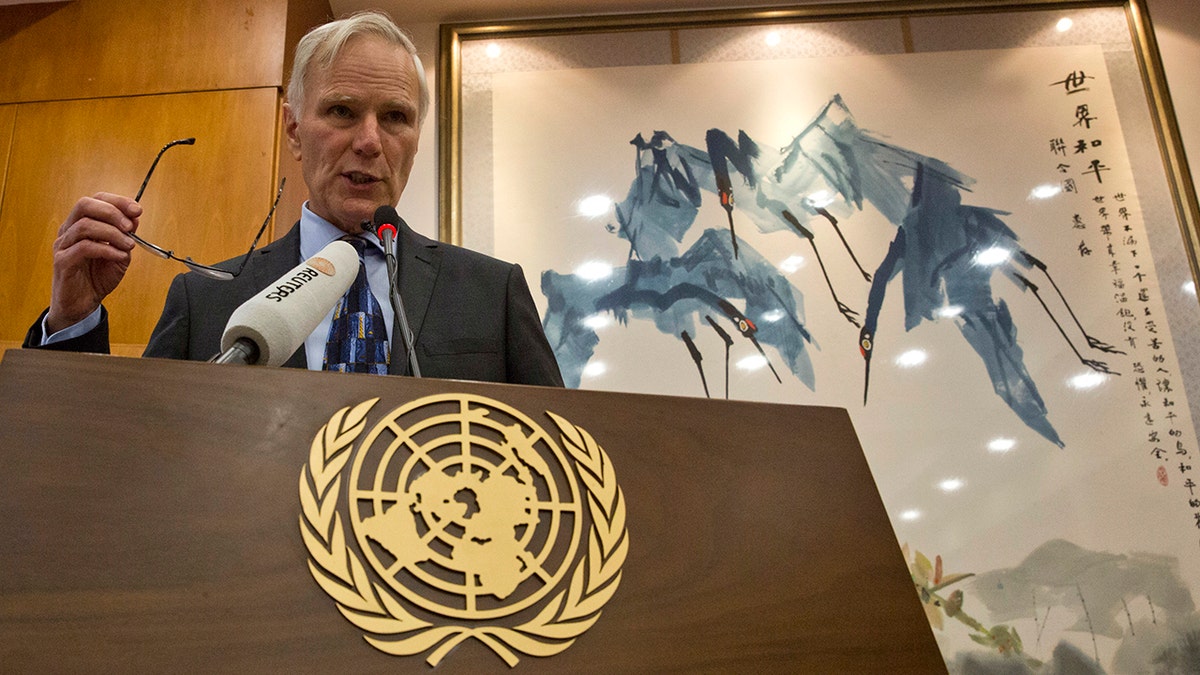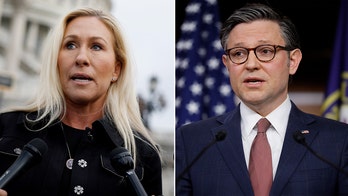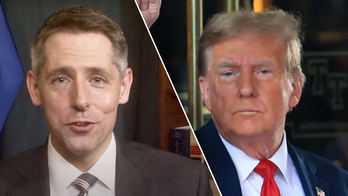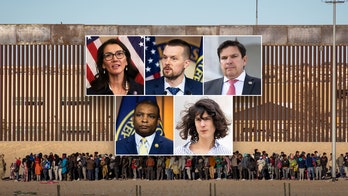
U.N. Special Rapporteur on extreme poverty and human rights, Philip Alston has issued a controversial report on the U.S. (AP)
A United Nations report on extreme poverty in the U.S., which has sparked strong denunciations from the Trump administration as being “inaccurate, inflammatory, and irresponsible,” is marred by carefully cherry-picked and suppressed data, unsourced negative assumptions about administration policies, and unsupported generalizations about allegedly regressive U.S. social and political policies, according to an examination of its source documents by Fox News.
The instantly controversial report was authored by U.N. special rapporteur on extreme poverty and human rights Philip Alston, an Australia-born international lawyer and co-founder of New York University’s Center for Human Rights and Global Justice.
Alston’s report was presented in Geneva on June 22 to the notorious U.N. Human Rights Council, and harshly condemns, among other things, huge wealth gaps between American rich and poor, stagnating household incomes, allegedly regressive tax and budget policies of the Trump Administration, and racially selective voter identification policies.
It also declares that “in imagining the poor, racist stereotypes are usually not far beneath the surface.”
The combative report was the most high-profile product recently by one of the nebulous group of U.N.-sponsored legal experts known as “special procedures, ” elected by the 47 member-states of the Human Rights Council but independent of the U.N., though the world organization covers travel and office expenses.
Alston is one of 44 so-called “thematic mandates” of the U.N.’s Human Rights Council, consisting of legal experts on specific topics who travel the world, critiquing the policies and actions of nations that agree to the inspection visits on the basis of their “thematic” mandates.
One of Alston’s more recent visits was to China: his subsequent report softly chided the Communist government for its “top-down approach to poverty alleviation,” and the “emergence of very high levels of inequality,” and offered critiques of the government’s treatment of people with disabilities, lack of protection for rural land rights, and concerns about the accuracy of government statistics on universal education.
With the U.S., however, all kid gloves were off. Alston made his Geneva presentation three days after Secretary of State Mike Pompeo and U.S. Ambassador to the U.N. Nikki Haley announced the U.S. was withdrawing from the council. They condemned the organization, which the U.S. only joined in 2009, as “an exercise in shameless hypocrisy – with many of the world’s worst human rights abuses going ignored, and some of the world’s most serious offenders sitting on the council itself.”
In his formal presentation, Alston scornfully compared the U.S. withdrawal to “the kid who takes his football and goes home,” before turning to his report.
It documented “the ways in which [U.S.] democracy is being undermined, the poor and homeless are being criminalized for being poor, and the criminal justice system is being privatized in ways that work well for the rich that seriously disadvantage the poor,” he said. “Underlying all of these developments is persistent and chronic racial bias.”
“The American dream of mobility is turning into the American illusion,” he further declared, “in which the rich get even richer, and the middle classes don’t move.”
In a lengthy telephone interview with Fox News, Alston admitted that some of the intentions behind his report were indeed provocative. “I think that if I go out on a limb,” he said, “I can put pressure on the U.S. to modify or mitigate conditions.”
At the same time, he coyly declined, at least in part, to declare his report outright political.
“Yes and no. Obviously, the notion that people are entitled to basic social protection as a government function is something most Republicans reject. The nature of human rights premises are more aligned with one political party than the other. The report might have an effect if there was a new [U.S.] government, with new thinking.”
The report is, he said, “a long-term thing.”
To buttress his assertions, Alston’s report almost immediately cited a 2016 U.S. Census Bureau report in claiming that in the U.S., “40 million live in poverty, 18.5 million in extreme poverty, and 5.3 million live in Third World conditions of absolute poverty.”
In fact, however, the Census Bureau report doesn’t say that. While the 40 million figure—actually 40.6 million-- comes from page 12 of the Census Bureau document, as specifically mentioned in an Alston footnote, the terms “extreme poverty” and “absolute poverty” appear nowhere in the document.
The Census Bureau does cite the fact 18.5 million people in the U.S. have an income only 50 percent of their poverty threshold—which could certainly be interpreted as extreme poverty —but makes no mention of 5.3 million people at an even lower threshold under any designation.
That 5.3 million figure comes instead, as Alston only vaguely footnotes, from a 2018 Op-Ed article in The New York Times written by a distinguished development economist, Angus Deaton—who in turn is citing the work of an Oxford economist, Robert Allen, who has created an entirely new baseline for his poverty designations—using 2013 World Bank figures.
Deaton’s article, in fact, was apparently written in the immediate wake of Alston’s U.S. fact-finding visit last December, and references a lengthy statement made by the U.N. special rapporteur says that in the U.S. “40 million people continue to live in poverty,” but delves no deeper.
Allen’s calculation, as used by Deaton, creates a new threshold for “absolute” poverty—and inflates the original number of “absolutely poor” Americans cited by Deaton in the New York Times piece from 3.2 million to 5.3 million—a hike of more or less two-thirds from the number used by Deaton in the first place.
So far as Deaton’s own use of the 3.2 million “absolute” poverty figure is concerned, he compares that total, unfavorably, to “3.3 million in other high-income countries (mostly in Italy, Japan and Spain). Deaton does not mention that the total population of those three countries is about 173.6 million, or about 53 percent of the U.S. population of 327 million--which means, on a per-capita basis, that U.S. “absolute” poverty rates, even by Deaton’s standards, are a little more than half of the three other nations taken together.
The U.S. State Department has further responded to Alston’s report by declaring “recent” studies using the U.S. Labor Department’s Consumer Expenditure Survey “suggest that only 175 of 222,170 surveyed American households reported spending less than an extreme poverty threshold figure of $4.00 a day, which implies that there are only approximately 250,000 persons in “extreme poverty” circumstances, rather than the exaggerated figure cited by the Special Rapporteur.”
The State Department rebuttal is largely a reference to a report by the conservative Heritage Foundation that appeared in March, shortly after Deaton’s piece was published in the New York Times.
An even more notable omission from the Alston report is that while it spotlights deplorably large numbers of poor Americans, it says nothing in its summary statement about the fact those numbers have been dropping, since well before the Trump administration took office.
Indeed, the very same sentence in the U.S. Census Bureau Report that mentions 40.6 million people in poverty—referenced in an Alston footnote - also notes the tally was “2.5 million fewer than in 2015 and 6.0 million fewer than in 2014.”
That amounts to a nearly 13 percent decline in absolute numbers over two years, and nearly 6 percent decline in 2016 over the previous year.
In terms of the overall poverty rate, the 2016 Census Bureau document makes clear, the decline is even more significant, from 14.8 percent in 2015 to 12.7 percent in 2016—a decline of nearly 14.2 percent between the two numbers.
In fact, the report says—also on Page 12—that “For most demographic groups, the number of people in poverty decreased from 2015.”
That includes children under age 18, where the poverty rate declined from 19.7 percent to 18 percent—roughly an 8.9 percent drop. The poverty rate for adults aged 18 to 64 declined from 12.4 percent to 11.6 percent, the report says, which would be a 6.45 percent decline.
The main exception was the poverty rate for adults aged 65 and older, which was 9.3 percent in 2016. The Census Bureau report calls that “not statistically different from the rate in 2015.”
Asked about his failure to mention the decline in poverty numbers, Alston told Fox News “I don’t think I have been in any way misleading. What I am reporting on is the situation today.” He also cited “space constraints” set by a United Nations-imposed 10,700 word limit on the report as a reason for the elision.
In fact, Alston does mention the poverty decline further down in his report—but only in defense of a war on poverty he implies the Trump administration is abandoning.
The same sort of space constraints were evidently required in Alston’s descriptions of huge U.S. differences in wealth — or, as he puts it, the “dramatic contrast between the immense wealth of the few and the squalor and deprivation in which vast numbers of Americans exist.”
To bolster his point, Alston cites a Federal Reserve Board Report that declares, as he puts it, “the share of the top 1 percent of the population in the United States has grown steadily in recent years. In 2016 they owned 38.6 percent of total wealth. In relation to both wealth and income the share of the bottom 90 percent has fall in in most of the past 25 years.”
What Alston does not mention, from the same Federal Reserve Board report, is that whatever the disparities, the amount of wealth held by all percentages of the population is growing, and especially among minorities and those less well off.
“Families without a college education and non-white and Hispanic families experienced larger proportional increases in net worth than other types of families,” says the Census Bureau report, “although more-educated families and white non-Hispanic families continue to have higher wealth than other families.”
The Federal Reserve report acknowledges “families at the top of the income and wealth distributions experienced large gains in mean and median net worth” in 2016, but emphasizes equally that “families near the bottom of the income and wealth distribution” also experienced large gains.
Moreover, when it comes to the wealth differentials that Alston criticizes, the Census Bureau document he cites also points out--though Alston does not-- that the vast differences between the wealth of the 1 percent and that of the bottom 90 percent are not accurate.
In the same section of the Census Bureau report mentioning those differences, the Federal Reserve document explicitly warns about the wealth figures that “some assets that may be widely held, such as defined-benefit pension and Social Security wealth, are not included in net worth definitions because of the many assumptions required to estimate their values.”
These are very definitely not small exclusions. Pension benefits, public and private, are major reservoirs of wealth among those who work for a living, and Social Security is another such reservoir for those who do not.
According to still another Federal Reserve report, total assets in public and private defined benefit plans in the U.S. in 2016 totaled $12.4 trillion, up about 7.8 percent from $11.5 trillion, in 2014. By way of contrast, the Trump administration’s proposed 2018 budget for the federal government was $4.094 trillion.
A different Federal Reserve report notes that defined benefit pension plans are held by 26 percent of non-retired America workers.
Yet another Federal Reserve report for 2016, the Supplemental Poverty Measure, notes that Social Security “continued to be the most important anti-poverty program [in the U.S.], moving 26.1 million individuals out of poverty.”
In other words, the warning Alston fails to cite about wealth imbalances is an extremely important limitation on the figures he decided to use without the warning.
Despite the evidence he has not mentioned, when it comes to U.S. measures to alleviate extreme poverty, Alston’s report is, overall, sweepingly dismissive of everything U.S. administrations, Democrat and Republican, have done for the past half-century.
As he puts it, “for almost five decades the overall policy response has been neglectful at best”— a view that contrasts with his defense, elsewhere in the report where it might reflect badly on the Trump administration, of the U.S. “war on poverty.”
But that is only by way of taking sharper aim at the Trump administration. As Alston puts it: “Proposals to slash the meagre welfare arrangements that currently exist are now sought to be justified primarily on the basis that the poor need to leave welfare and go to work … In reality, the job market for such people is extraordinarily limited, and even more so for those without basic forms of social protection and support.”
He adds, without offering any expert citations, that “the $1.5 trillion in tax cuts in December 2017 overwhelmingly benefited the wealthy and worsened inequality,” and that “the policies pursued over the past year seem deliberately designed to remove basic protections from the poorest, punish those who are not in employment, and make even basic health care into a privilege to be earned rather than a right of citizenship.”
In fact, as Alston noted in his interview with Fox News, the first U.S. government economic statistics that gauge the impact of Trump administration economic policies won’t be available until September. The conclusions about the Trump policies in his report, he says, are “based on an awful lot of reading. I am happy to have reached that conclusion.”
Acknowledging the Trump administration’s corporate tax cuts and other measures have led to a U.S. unemployment rate — 3.8 percent - unseen for many years, Alston added: “I don’t accept that increased tightness of the labor market is actually going to reduce poverty.”
Alston also cites a 2017 report by the International Monetary Fund, which, he says, states the U.S. economy “is delivering better living standards for only the few,” and that “household incomes are stagnating for a large share of the population, job opportunities are deteriorating, prospects for upward mobility are waning, and economic gains are increasingly accruing to those that are already wealthy.”
In his footnote reference, however, Alston clarifies the quoted comments are from a staff report that was used in preparation for the IMF’s annual version of a report known as its Article IV Consultation with the U.S. The IMF website says the preliminary conclusions “do not necessarily represent the views of the IMF’s Executive Board.”
Moreover, the full text of the staff statement links the difficulties Alston cites to “many other advanced economies”—and pooh-poohs the idea the U.S. economy can achieve the kind of faster growth rates that after a year of the Trump administration have already been achieved.
Central to all of Alston’s views on extreme poverty is the claim that its existence is, ultimately, political. As he puts it: “particularly in a rich country like the United States, the persistence of extreme poverty is a political choice made by those in power. With political will, it could readily be eliminated.”
The fact that whatever its actual dimensions, such poverty has not been eradicated means virtually by Alston’s definition, that political—not to mention racial-- intentions are also involved. American democracy “is being steadily undermined,” Alston asserts, a process with strongly racial implications.
Among other things, he cites the “overt disenfranchisement of more than 6 million felons and ex-felons, which predominantly affects Black citizens since they are the ones whose conduct is often specifically targeted for criminalization.”
By that, Alston told Fox News, he meant, among other things, disproportionate sentencing for those convicted of using crack cocaine who he asserted were largely black. That differential situation changed, however, with passage of the Obama-era Fair Sentencing Act of 2010.
To that Alston added “covert disenfranchisement, which includes the dramatic gerrymandering of electoral districts to privilege particular groups of voters, the imposition of artificial and unnecessary voter identification requirements, the blatant manipulation of polling station locations, the relocation of Departments of Motor Vehicles’ offices to make it more difficult for certain groups to obtain identification, and the general ramping up of obstacles to voting, especially for those without resources.”
“The net result,” he concluded, “is that people living in poverty, minorities and other disfavored groups are being systematically deprived of their right to vote.”
In fact, at least some of the evidence points in other directions. Alston’s work takes no notice of the large number of black and Hispanics who have been elected to local, state and federal offices in past decades. Gerrymandered electoral districts have also been employed federally to consolidate minority votes and elect minority politicians.
Without offering proof, Alston then directly links minority discrimination to overall low U.S. voter participation rates: “It is thus unsurprising that the United States has one of the lowest turnout rates in elections among developed countries, with only 55.7 percent of the voting-age population casting ballots in the 2016 presidential election.” (The highest rate mentioned in the Pew Research Center survey cited belongs to Belgium.)
But the question of whether alleged “covert disenfranchisement” is the direct cause of U.S. voting rates is highly debatable. Even the evidence on the most recent hot-button issue involved, the imposition of voter ID requirements, is far from clear about that.
A well-publicized study of black voter participation rates in Georgia, using data from 2000-2014, for example, concluded that “while turnout among blacks in Georgia fluctuates, turnout since the implementation of the strict voter identification law [of 2005, mandating state-issued voter ID] is generally higher than black turnout was immediately before strict voter ID requirements were enforced."
The study author, political science professor Andra Gillespie of Emory University, told Fox News, however, that it will likely take years before more definitive conclusions can be reached. And even if voter ID requirements don’t have negative effects, she added, “civil rights people have complete justification in opposing them” for reasons of “historical motivation.”
Yet another high-profile recent study of stringent voter ID requirements in Indiana, on the other hand, has declared it found “strong evidence to support our thesis that strict voter-identification laws would substantially affect lower-income, minority, and elder voters.”
But that study has now been criticized by a team of political scientists who studied its internal data as “a product of data inaccuracies; the presented evidence does not support the stated conclusion; and alternative model specifications produce highly variable results.”
Bottom line: the statistical evidence so far doesn’t support one side or the other. “Even from an insider perspective, nobody is necessarily right,” observes Rene Rocha, an associate professor in the University of Iowa’s political science department and author of a study of the impact of voter ID requirements, that he says, was, in turn, criticized on methodological grounds.
“Unfortunately, there is a lack of scholarly consensus on this, which boils down to disputes over statistical modelling. We are really still in an area where there is just not academic consensus.”
So where does Alston’s certainty come from? Largely from generalized observation. “There have been a whole range of measures taken in relation to voting rights,” he told Fox News. “All have been characterized by a number of observers. The facilitation of the elimination of large numbers of voters from rolls is shown to have very predictable outcomes, clearly in violation of international human rights law.”
Alston’s generalizations, however, do not take into account situations such as that in Texas, where, after courts ruled against the state’s photo ID strictures, the state added an alternative that skips the photo ID requirement and accepts non-photo proof of identification, including a utility bill or a birth document.
Much of the characterization that has focused Alston’s opinions comes from highly committed and often strongly left-of center non-government organizations, as well as anti-poverty sections of university law schools, which were compiled in advance of his two-week visit to the U.S. last December 1-15. These groups range from the ACLU to the Sargent Shriver National Center on Poverty Law in Chicago, to the Washington-based National Center for Homelessness and Poverty.
One of the most influential is undoubtedly the U.S. Human Rights Network (USHRN), a coalition of some 300 U.S. organizations that calls itself a national network “working to strengthen a human rights movement and culture within the United States led by the people most directly impacted by human rights violations.”
One of its chief missions is “raising the visibility of local human rights concerns and activism to shape the public discourse locally, nationally, and internationally.” A section of USHRN’s website devoted to international coordination says that the organization “works to engage our membership and the broader social justice community in the effective use of human rights mechanisms as tools to advance a domestic agenda based on human rights.”
USHRN has been an important, at times even dominant, influence among non-government organizations harshly focused on alleged U.S. human rights failings, dating back virtually to the beginning of U.S. involvement with the U.N. Human Rights Council.
USHRN managed to secure most of a full working day of Alston’s time during his two week visit last December. The occasion was the network’s “7th Biennial Advancing Human Rights Convening,” where the purpose was to “heal, reflect and strategize to advance a human rights movement in the U.S. in 2018 and beyond.” Alston told Fox News that the timing of his visit and the timing of the overall USHRN meeting was a “pure coincidence.”
According to Rosalee Gonzalez, acting executive director of USHRN, who also attended Alston’s Geneva presentation, the network contacted the U.N. special rapporteur and his staff “at least a month and a half” prior to his December visit, and “did a lot of training in advance. We had a lot of planning meetings.”
Sessions with Alston lasted an hour and 20 minutes each and covered such broad topics as “rural women,” “indigenous peoples,” and “migrants, immigrants and refugees.” Among other things, said Gonzalez, “we did a lot of racial analysis.”
Gonzalez also found the outcome, in terms of the report itself, pretty satisfactory. “We’ve welcomed the report,” she said. “In general, he used very strong language, which we think is appropriate for the U.S.”
“I think Alston is setting a precedent,” Gonzalez summarized. “He has a media strategy thought out. The whole process is aimed at media impact. He has a team of people effective at doing media, which other [U.N] rapporteurs had not considered. There will be thorough follow-up.”




